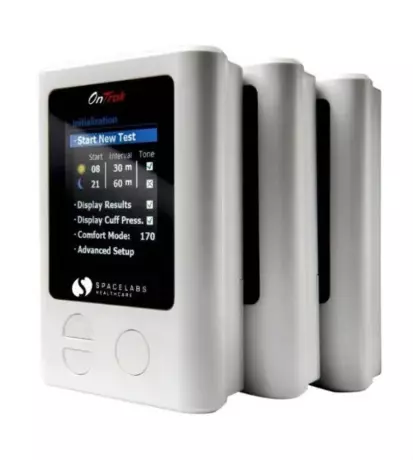
Spacelabs 90227 OnTrak ABPM Recorder
Spacelabs 90227 OnTrak ABPM Recorder Light weight and compact size for optimal patient comfort. Usin...
Portal and digital medical technology fair of the largest MedTech cluster in Germany

Spacelabs 90227 OnTrak ABPM Recorder
Spacelabs 90227 OnTrak ABPM Recorder Light weight and compact size for optimal patient comfort. Usin...
Ihre Suche lieferte keine Ergebnisse, aber Sie können sich auf dieser Seite präsentieren
Mit einem Eintrag auf Weltzentrum der Medizintechnik platzieren Sie Ihr Unternehmen bei Google & Co. ganz weit oben und erreichen so jeden Tag mehrere Tausend potentielle Kunden aus der Medizintechnikbranche. Mehr Informationen gibt es auf der Firma eintragen - Seite.

Cardiovascular closure systems are a useful tool for repairing a ruptured aortic valve. The simplest form involves a suture. However, more complicated devices require more invasive techniques. In addition, ACDs can also pose a risk to the heart. The risks associated with ACDs include infection, stroke, and mechanical problems. To determine if one of these devices is right for you, read this article.
The Celt ACD closure device addresses the need for faster patient throughput while performing catheter angiography procedures. The system also provides a solution for arterial closure, says Shing-Chiu Wong, MD, director of cardiac catheterization at NewYork-Presbyterian/Weill Cornell Medical Center and the lead investigator for the first commercial cases in the U.S. The use of metal hardware in vascular closure systems has drawn criticism from some physicians who believe it can damage vessels and create scar tissue.
However, the use of femoral vascular closure devices is gaining popularity. These systems provide a faster time to hemostasis than mechanical compression, but patients must stay bedridden for three to five days. The downside of these devices is that they come with an increased risk of infection and distal ischemia. If complications are unavoidable, surgical repair is necessary. If your doctor recommends a femoral vascular closure system, be sure to ask for your physician's opinion.
Using a vascular closure device is safer than manual compression. Recent clinical trials conducted by Essential Medical and the University of Texas at Austin have shown that using an ACD is an effective method of securing a stent. Both methods have their own downsides, however. While they can both seal a stent, one is more likely to need more than one to achieve hemostasis. And if a stent fails to hold, a second device may be needed to prevent the bleed.
Although femoral vascular closure devices are less invasive than surgery, they can still cause a large number of complications, including stroke and heart failure. In some cases, the implantable device is the best option. The risk is minimal if it is not in the bloodstream. But, if you have a shunt, the device may not work as well. It may be necessary for you to undergo surgery before an ASD is treated.
After a heart attack, a cardiac closure system can be implanted to close the hole. It is not a surgery, but it is a common procedure that can result in complications. After the procedure, the device will be implanted in the heart. Your surgeon will use the catheter to place the device, and it will be placed inside the femoral artery. This allows the surgeon to see where the hole is and where to insert it.
Transcatheter closure systems can close atrial septal defects, a condition in which an upper chamber of the heart is missing. These procedures avoid open-heart surgery, and are less invasive and less painful. To close an aortic septal defect, a cardiac closure system can be implanted through the catheter. The catheter will be inserted through a vein in the groin. The closure device can then be positioned anywhere in the aorta.
There are two types of cardiac closure systems. Passive systems use a suture to close the hole in the heart. Active devices use collagen plugs or suture to seal the aortic valve. In a cardiac surgery, a permanent implanted device can help reduce the risk of vascular complications and increase the time to hemostasis. In some cases, a single device can close the hole of a coronary artery.
An arteriotomy closure system can help reduce the risk of vascular complications. An arteriotomy closure device reduces the time required for the patient to recover from the procedure and is recommended for those with coronary artery disease. ACDs are an ideal choice for cardiac patients who have a weakened or damaged heart. They can reduce invasive surgery and improve patients' quality of life. In a hemostasis procedure, the vascular closure system can help prevent a stroke.
There are many advantages of a cardiac closure system. The device is used to seal a femoral artery. A fenestrated device can function as a pop-off valve for the right atrium. It is also available in a portable version for easier and more convenient access for the surgeon. This type of a cardiac closure system is a popular option for patients with coronary artery disease.
Become a digital exhibitor yourself in the online portal of the largest and best-known MedTech cluster region in Germany and inform the world of medical technology about your products and services as well as about news, events and career opportunities.
With an attractive online profile, we will help you to present yourself professionally on our portal as well as on Google and on social media.